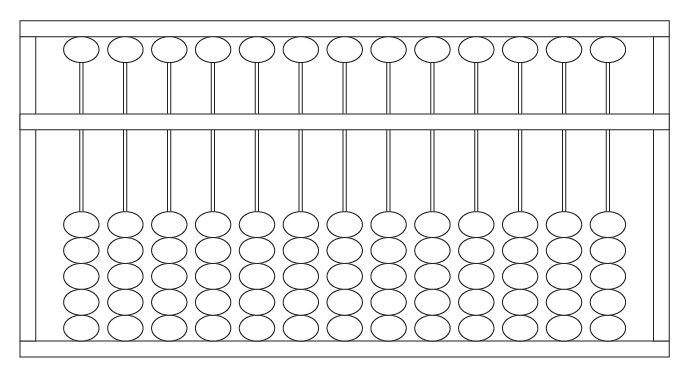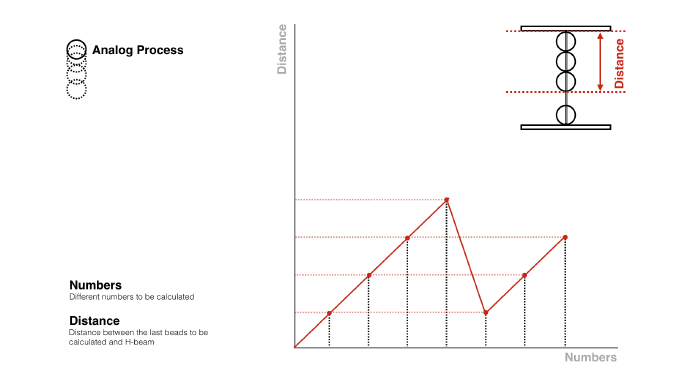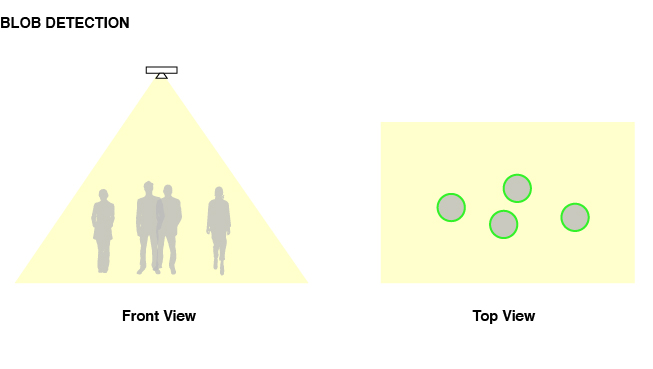Analogter
Introduction
"Analogter" is an interactive and automatic calculation machine to calculate the amounts of people surrounded it, it simulates the interface and logic of abacus, and above all, enlarges the analog process of abacus in a performative form.
In this project, I want to design a interactive installation based on the algorithm of Chinese Modern Abacus, which has one bead on each rod in the upper deck and four beads each in the bottom for decimal computation.
What is abacus
The abacus is at once one of the oldest, most enduring, and efficient products of the human mind. It appeared early before arabic numbers, so it doesn’t have a sense of numbers. abacus does the calculation according to the different beads and the position of them to represent different numbers. The upper bead represents 5 and each bead below the horizontal beam represents 1. And the beads are considered to be calculated when they move close to the horizontal beam.
Compared to nowadays calculation technology operated by simple click by button, abacus enlarges the process of calculation in an analog way. We can draw the graph below when take the position between the beads and horizontal beam as Y axis, the number it presents as X axis. As a calculation process which needs to be well trained and once defined abacus as a efficient tool, nowadays literally causes hardly use of abacus.
Where does media go to die(cited)
Technology lets us have efficiency and accuracy without work being performed by the user. But it is too optimistic to overview what technologies have done until now. We should consider what representational characteristic practices are still used and apply to brand new artifacts that satisfy many of users. In the case of the abacus, we needed to work on encoding and decoding to get the result as possible, yet remediated forms of calculations may no longer have an encoding and decoding process.(Cited from <http://cultureandcommunication.org/deadmedia/index.php/Abacus>
What I wanna make
When we work in analog, we must work on with certain level of commitment and performance to get the results. After going Digital, we may just be a "cybernerd." In this project, I want to enlarge the analog process which abacus performed in an analog way. And reconsider the elements of production and calculation process in abacus.
Production:
1. Reconsider the key structure to make an abacus work, the rods are replaced by nylon lines and springs to connect beads which hence enlarges the analog performance of the process in a unpredictable way.
2. Nylon lines are used to connect the springs and beads, which controlled by stepper motors and are able to carry beads into a specific position towards horizontal beam then considered to be calculated.
3. Springs will responsible for the tension of beads which are not calculated, and fluctuant elasticities are generated during the calculation process which creates a unpredictable and analog performance.
4. Installation is to be hung on the roof in Bauhaus Digital Lab and a webcam is set to capture the amounts of visitors surround the installation.
Calculation Process:
1. Redesign the relationship between human and abacus. As a calculation process which needs to be well trained and once defined abacus as a efficient tool, nowadays literally causes hardly use of abacus. In my case, Analogter is not designed to be the efficient but a new calculation tool, it's automatically calculating by itself.
2. Abacus is passively performed by human executing behavior, analogter is reading the captured amounts of people through external webcam and receiving wirelessly through bluetooth, above all, analogter performed the calculation results automatically by itself in real time.
Algorithm of capture
There are many ways for the computer vision to calculate the capture area to serve for your purpose. To calculate the amounts of people, you may use face detection or blob detection. Here, I am going to use blob detection cause there exists the case someone who will walk in front of somebody, then the face will not be well detected by the webcam. Blob detection will be great to calculate the amounts of people if we are going to set the webcam on the roof of lab, so that every person that inside the capture area will be detected as a blob. For detailed information about how to calculate the numbers of people in DBL, please check here: <http://www.uni-weimar.de/medien/wiki/GMU:Tutorials/Performance_Platform/Custom_People_Counting>
Set in Bauhaus Summaery









